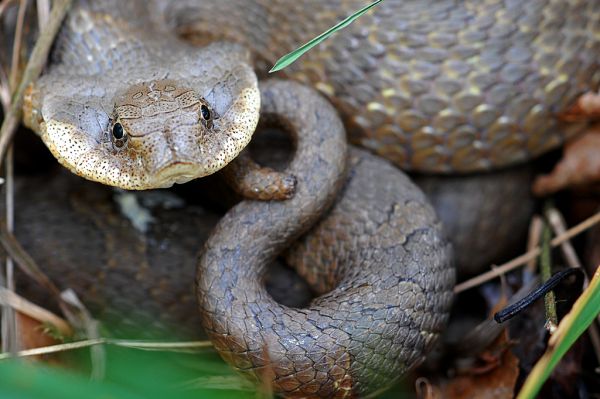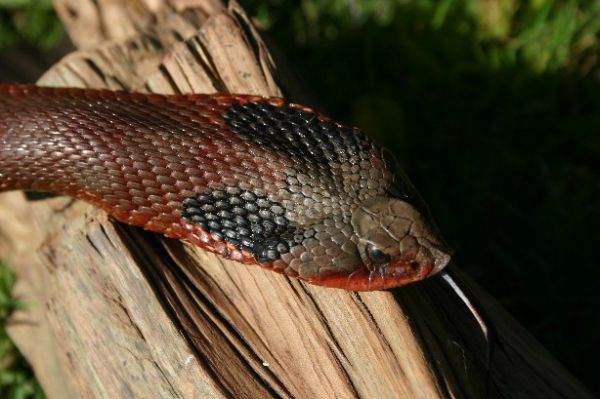Wildlife North America . com North American Animals - mamals, birds, reptiles, insects |
Eastern Hognose Snake (Heterodon platirhinos)
Eastern Hognose at Pickerel Lake in West Michigan. Photograph by Jon and Michelle. Some rights reserved. (view image details) 
Eastern Hognose - red variant, Sawdust Ranch near Somerville, Texas. Photograph by Clinton & Charles Robertson. Some rights reserved. (view image details)
EASTERN HOGNOSE SNAKE FACTS
DescriptionThe Eastern Hognose Snake is variable in color and pattern. The background color can be red, green, orange, brown, grey or black, or combination of shades. The pattern can be blotched, checkered, or solid color with no pattern. The underside is grey, yellow or cream. It has an upturned snout used for digging in sandy soils. They hibernate in burrows or under tree stumps. Other Names Eastern Hog-nosed Snake, Spreading Adder, Black Adder, Black Blowing Viper, Black Hog-nosed Snake Size length 50cm - 115cm. average 71cm. Females are larger than males Environment pine forests, deciduous woodlands, prairies, meadows, pasture, sand hills Food The Eastern Hognose Snake feeds on toads and is immune to toad toxins. They also eat frogs and salamanders. Breeding Females lay 10-30 eggs which hatch after about 60 days. Range found in the United States east of the Rocky Mountains. Also found in southern Canada. Notes The Hognose Snake is not considered dangerous to humans. It is a docile snake. When harassed, it may hiss and strike but does not bite. Sometimes it plays dead and/or excretes a foul musk when threatened. Eastern hognose snakes are sold in the pet trade, but can be difficult to keep due their dietary requirements (they are susceptible to liver problems if fed on rodents). Classification
Relatives in same Genus Western Hognose Snake (H. nasicus) Home | Mammals | Reptiles | Birds | Insects | Privacy Policy | Disclaimer | Contact Us |